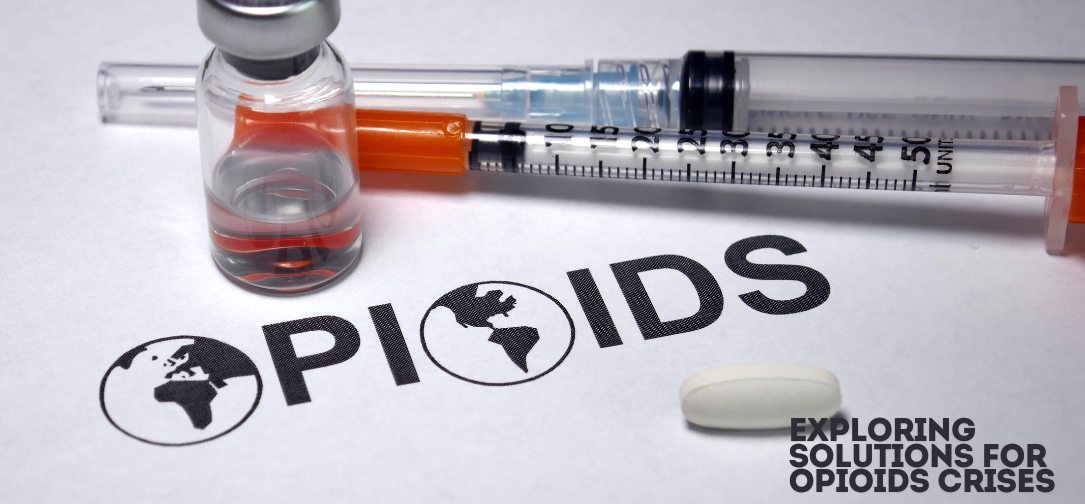Healthcare
The Opioid Epidemic: Understanding the Crisis and Exploring Solutions

The opioid epidemic has evolved into one of the most severe public health crises in modern American history, impacting millions of lives and placing immense strain on healthcare, criminal justice systems, and communities. Originating in the late 1990s, the epidemic has taken on new dimensions in recent years, largely driven by synthetic opioids like fentanyl. Understanding the epidemic’s roots, its current trajectory, and potential solutions is essential for mitigating its devastating effects.
The Scale of the Crisis
According to the Centers for Disease Control and Prevention (CDC), over 109,000 Americans died from drug overdoses in the 12-month period ending in January 2023. Over 75% of these deaths were linked to opioids, underscoring the magnitude of the crisis. The ongoing surge in opioid-related deaths has been fueled primarily by synthetic opioids, particularly fentanyl, which is 50-100 times more potent than morphine. Fentanyl is increasingly being mixed into other drugs, sometimes without the user’s knowledge, contributing to accidental overdoses at an alarming rate.
The epidemic has also imposed significant economic burdens. A 2022 report by the National Institutes of Health (NIH) estimated the total economic cost of the opioid crisis at more than $1 trillion annually, factoring in healthcare, criminal justice costs, and lost productivity. The widespread impacts of this epidemic are felt across society, from urban centers to rural communities, with particularly high death rates in states like Ohio, West Virginia, and Kentucky.
Origins of the Epidemic
The origins of the opioid crisis can be traced back to the aggressive marketing of opioid painkillers in the 1990s. Pharmaceutical companies, most notably Purdue Pharma, promoted drugs like OxyContin as safe and effective for long-term use, despite evidence of their addictive potential. Physicians, under pressure to manage pain as a “fifth vital sign,” began prescribing opioids at unprecedented rates. By the mid-2000s, prescription opioid abuse had escalated, with many individuals transitioning from prescription drugs to cheaper, more accessible illicit opioids like heroin.
Synthetic opioids, particularly fentanyl, emerged in the 2010s, dramatically increasing the lethality of the drug supply. Fentanyl is not only highly potent but is often mixed with other substances, leading to a sharp rise in overdose deaths. According to RAND Corporation, fentanyl was responsible for nearly 80% of opioid-related deaths in recent years.
Factors Perpetuating the Crisis
Several factors have sustained the opioid epidemic despite awareness and efforts to combat it. One significant issue is the stigma surrounding addiction, which deters individuals from seeking help. Opioid use disorder (OUD) is often misunderstood as a moral failing rather than a chronic medical condition. This misconception has contributed to a lack of comprehensive treatment and support systems, leaving many individuals to navigate their addiction alone.
Additionally, the criminalization of drug use exacerbates the problem. As noted by the Harvard Gazette, people with substance use disorders are often caught in a cycle of incarceration and relapse. Policies that criminalize drug use rather than focusing on harm reduction and treatment create barriers to recovery. For example, incarceration can interrupt individuals’ access to Medicaid, hindering their ability to obtain treatment upon release.
The shortage of accessible treatment options further compounds the problem. Mayo Clinic highlights that while medications like buprenorphine and methadone are effective in managing opioid dependence, they are often underutilized due to regulatory hurdles and social stigma. Expanding access to these medications, along with ensuring longer retention periods for treatment, is crucial for preventing relapse and overdose deaths.
Emerging Solutions and Interventions
Several strategies are currently being explored to address the opioid crisis, many of which take a more comprehensive public health approach. Experts argue that a combination of prevention, treatment, harm reduction, and policy reform is necessary to reverse the epidemic’s course.
1) Harm Reduction Strategies: Harm reduction initiatives, such as supervised consumption sites and the widespread availability of naloxone (an overdose-reversal drug), are gaining traction in states across the U.S. These measures are designed to reduce the immediate risk of death from overdose while providing opportunities for individuals to access treatment. A RAND study noted the importance of these interventions in saving lives, emphasizing that efforts to scale back harm reduction could lead to a resurgence of overdose deaths.
2) Medication-Assisted Treatment (MAT): Expanding access to medications that treat opioid use disorder is essential. A 2023 study published by the Harvard Gazette found that scaling up MAT by two- to five fold could avert thousands of deaths in the coming years. States like Massachusetts and Ohio have already implemented successful MAT programs that are credited with reducing overdose deaths by up to 27% in just two years.
3) Prevention and Education: Preventing opioid misuse before it begins is another critical component of addressing the epidemic. Public health campaigns aimed at reducing stigma, along with education initiatives that target both healthcare providers and the general public, can help reduce the over-prescription of opioids and encourage safe drug use practices.
4) Comprehensive Support Systems: The opioid crisis has highlighted the need for an ecosystem approach that integrates multiple services, from healthcare to housing and criminal justice reform. According to RAND, policies that ensure stable housing and income support for individuals in recovery can significantly improve treatment outcomes and prevent relapse. Moreover, reforms in the criminal justice system that focus on treatment rather than punishment can help individuals break the cycle of addiction and incarceration.
5) Technological Innovations: Emerging technologies, such as simulation modeling, are being employed to predict the outcomes of various public health interventions. For instance, researchers at the Harvard Gazette used mathematical models to evaluate the effectiveness of different opioid intervention strategies. Their findings suggest that long-term, sustained efforts to expand treatment access and reduce prescription misuse are critical for preventing a future surge in overdose deaths.
The Role of Policymakers
Policymakers play a crucial role in the fight against the opioid epidemic. The passage of the 2018 SUPPORT for Patients and Communities Act was a significant legislative step toward addressing the crisis, providing billions in funding for treatment, prevention, and recovery support services. However, more comprehensive legislation is needed to ensure long-term solutions. This includes removing regulatory barriers that limit access to treatment and ensuring that harm reduction measures are adequately funded.
Policymakers must also consider the socioeconomic factors that contribute to opioid misuse, such as poverty, unemployment, and lack of access to mental health care. Addressing these root causes through social safety nets and robust healthcare systems can help prevent individuals from turning to opioids as a coping mechanism.
Conclusion
The opioid epidemic remains a complex and multifaceted public health emergency. While significant progress has been made in terms of harm reduction and treatment, much work remains. Solutions must be comprehensive, combining prevention, treatment, harm reduction, and systemic reform to address the root causes of the epidemic. By scaling up interventions, removing barriers to treatment, and adopting a compassionate approach to addiction, the U.S. can make meaningful strides toward ending this crisis. However, sustained efforts and long-term investments are essential to ensure that these strategies are effective and that the crisis is not exacerbated further.
-

 Home and Garden6 days ago
Home and Garden6 days agoTransform Your Space: A Guide to Minimalist House Interior Design in 2025
-

 Home & Family6 days ago
Home & Family6 days ago10 Essential Cleaning Hacks for Bathroom Surfaces You Need to Try
-

 Health & Fitness6 days ago
Health & Fitness6 days agoDiscovering the Best Multivitamin for Women Over 40: Essential Nutrients for Optimal Health
-

 Health & Fitness6 days ago
Health & Fitness6 days agoDiscover the Best Multivitamin for Women Over 40: A Comprehensive Guide to Optimal Health
-

 Automotive5 days ago
Automotive5 days agoUnlocking Performance: Why the HP Spectre x360 is the Ultimate 2-in-1 Laptop for 2025
-

 Crime6 days ago
Crime6 days agoExploring the Most Anticipated New True Crime Documentaries of 2025
-

 Business6 days ago
Business6 days agoMaximize Your Earnings with American Express High Yield Savings Accounts in 2025
-

 Gadgets & Electronics5 days ago
Gadgets & Electronics5 days agoTop 5 Unlocked Android Phones Under $100 for Budget Shoppers in 2025





































